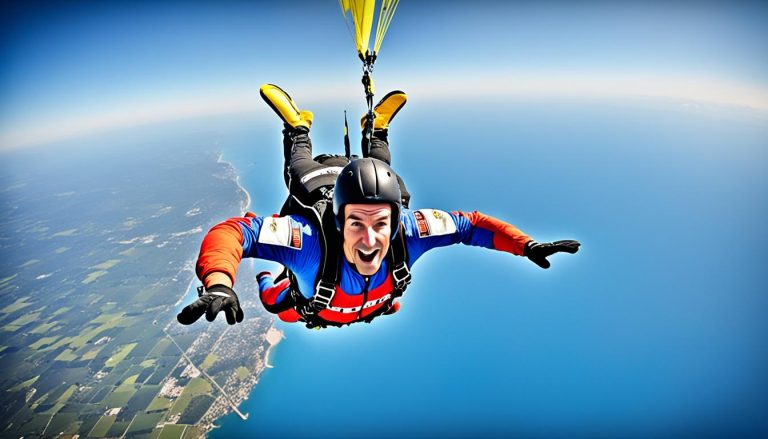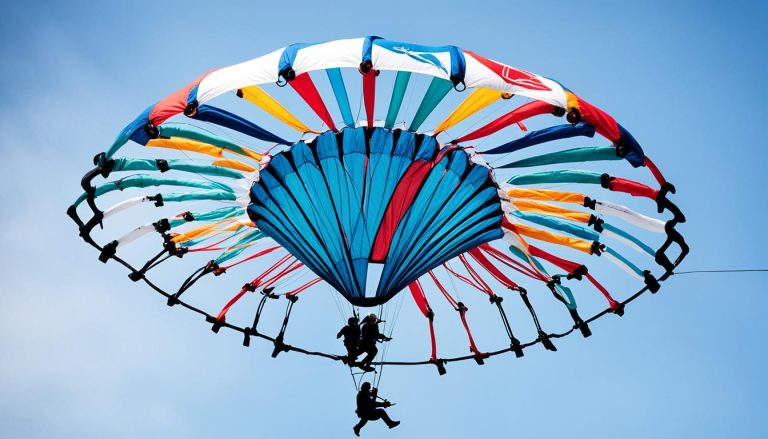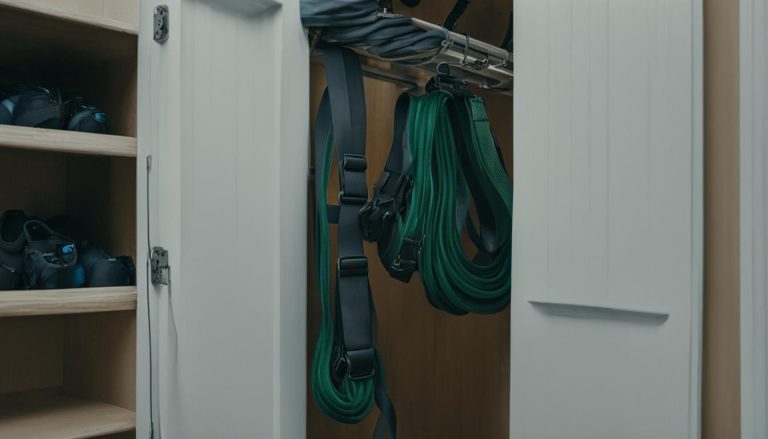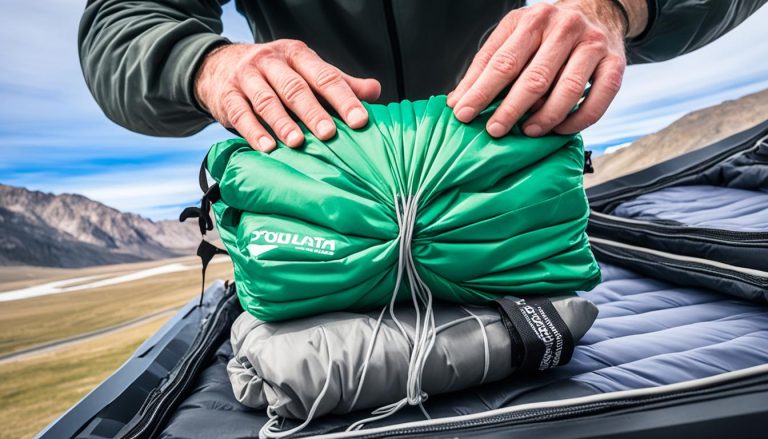The importance of choosing the appropriate size of parachute for jumping from high mountains
When it comes to mountain jumping, choosing the right size parachute is of utmost importance. The size of the parachute can greatly impact the safety and success of your jump. It is crucial to consider factors such as the altitude of the jump, your weight, and the desired descent rate in order to determine the best parachute size for your high mountain adventure.
Mountain jumping parachute size should be carefully determined to ensure that it provides adequate lift and control during your descent. A parachute that is too small may result in a fast descent, while a parachute that is too large may not provide enough lift. Strike the right balance to enjoy a safe and thrilling experience.
Calculating parachute size for high altitude jumps requires special consideration. At higher altitudes, the air is thinner and provides less lift. Therefore, a larger parachute may be necessary to compensate for this. Your weight and desired descent rate must also be taken into account to ensure a smooth and controlled descent.
Remember, the size of your parachute is crucial for your safety during mountain skydiving. By selecting the appropriate size, you can control your descent rate, ensure stability, and have a safe landing. Seek guidance from experienced skydivers or instructors who can provide valuable insight into the specific requirements of mountain jumps to help you determine the right parachute size for your high altitude adventure.
Factors to Consider when Choosing a Parachute Size for Mountain Jumping
When determining the appropriate size of parachute for mountain jumping, several factors should be taken into consideration. These include the jumper’s weight, the altitude of the jump, and the desired descent rate. A larger parachute will provide more lift and slower descent, while a smaller parachute will result in a faster descent. It is important to find the right balance between control and speed for a safe and enjoyable jump.
When selecting the right parachute size for mountain jumps, it is crucial to consider the jumper’s weight. A heavier jumper may require a larger parachute to ensure adequate lift and control during the descent. On the other hand, a lighter jumper may be able to utilize a smaller parachute for a faster descent.
The altitude of the jump is another important factor to consider when choosing a parachute size for mountain plunges. At higher altitudes, the air is thinner, which means less lift. In such cases, a larger parachute may be necessary to compensate for the reduced lift provided by the thinner air.
The desired descent rate also influences the choice of parachute size. For those who prefer a slower descent, a larger parachute with more surface area will help achieve that. However, if a faster descent is desired, a smaller parachute will result in a quicker descent rate.
It is crucial to find the right balance between control and speed when selecting the parachute size for mountain jumps. A parachute that is too large may result in a slower descent but could compromise control during the jump. Conversely, a parachute that is too small may provide a faster descent but may be more challenging to control, posing safety risks.
“Selecting the right parachute size is crucial for a safe and enjoyable mountain jump. It requires careful consideration of the jumper’s weight, the altitude of the jump, and the desired descent rate. By finding the right balance between control and speed, skydivers can have a thrilling experience while ensuring their safety.”
To further understand the factors to consider when choosing a parachute size for mountain jumping, please refer to the table below:
| Factor | Considerations |
|---|---|
| Jumper’s Weight | Heavier jumpers may require a larger parachute for adequate lift and control. |
| Altitude of the Jump | Higher altitudes with thinner air may necessitate larger parachutes for compensating reduced lift. |
| Desired Descent Rate | A larger parachute will result in a slower descent, while a smaller parachute will lead to a faster descent. |
Parachute Sizing for High Altitude Jumps
When it comes to high altitude jumps, choosing the right parachute size is crucial for a safe and successful descent. At higher altitudes, the thin air provides less lift, making it necessary to compensate with a larger parachute. But how do you calculate the appropriate size for these challenging jumps? Let’s dive into the details.
To determine the parachute size for high altitude jumps, several factors must be considered. First and foremost is the weight of the jumper. A heavier jumper will require a larger parachute to ensure adequate lift and control during the descent.
Next, the desired descent rate plays a significant role in determining the parachute size. The descent rate refers to how fast the jumper descends during the jump. A slower descent rate may be desired for a more controlled and gentle landing, requiring a larger parachute size. Conversely, a faster descent rate may be preferred for advanced skydivers, which can be achieved with a smaller parachute.
To calculate the parachute size for high altitude jumps, precise calculations should be made to ensure the parachute can provide enough lift to navigate the descent safely. Skydiving experts and instructors can help in determining the appropriate size, taking into account the altitude of the jump, the weight of the jumper, and the desired descent rate.
Here is an example of a parachute size calculation for a high altitude jump:
| Altitude | Jumper’s Weight | Desired Descent Rate | Parachute Size |
|---|---|---|---|
| 10,000 feet | 180 lbs | Slow descent (20 mph) | 120 square feet |
| 14,000 feet | 150 lbs | Fast descent (35 mph) | 100 square feet |
| 18,000 feet | 200 lbs | Slow descent (22 mph) | 135 square feet |
Remember, these calculations serve as general guidelines, and consulting with experienced skydivers or instructors is always recommended to determine the best parachute size for high altitude jumps.
By carefully considering the jumper’s weight, desired descent rate, and altitude, you can choose the appropriate parachute size for high altitude jumps, ensuring a safe and thrilling skydiving experience.
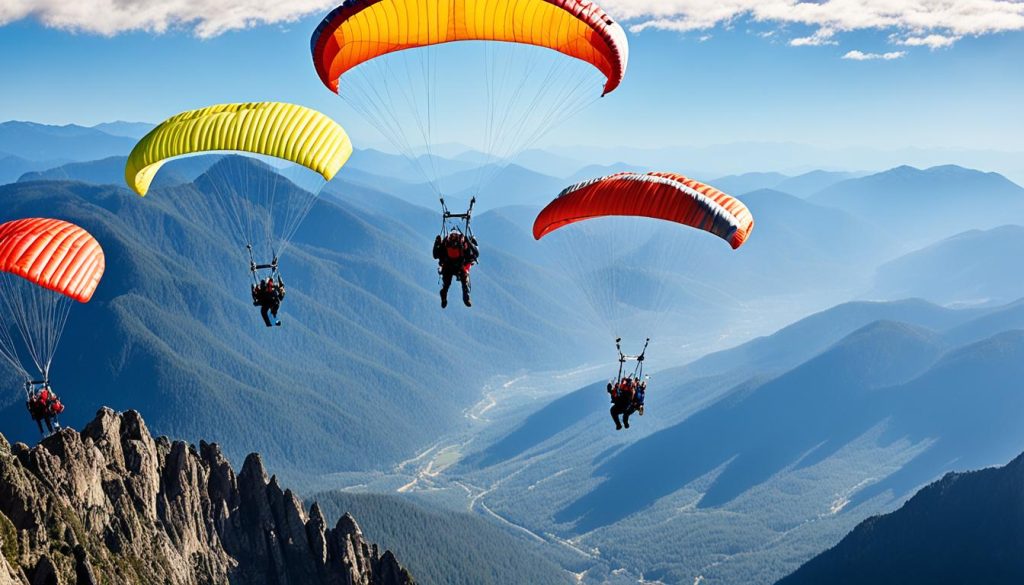
Understanding the Parachute Size Requirements for Mountain Skydiving
Mountain skydiving presents unique challenges due to the high altitude and varying descent rates. It is crucial to select the appropriate parachute size to ensure a safe and enjoyable jump. The size of the parachute will depend on factors such as the altitude of the jump, the weight of the jumper, and the desired descent rate.
When choosing the best parachute size for mountain jumping, it is essential to consider the effect of altitude on air density. As the altitude increases, the air becomes thinner, resulting in reduced lift. A larger parachute is typically required to compensate for this decrease in air density and provide sufficient lift for a controlled descent.
Additionally, the weight of the jumper plays a role in determining the parachute size. Heavier jumpers require larger parachutes to achieve adequate lift and maintain stability during the descent. On the other hand, lighter jumpers may benefit from smaller parachutes that offer faster descent rates.
Another crucial consideration is the desired descent rate. Some skydivers prefer a slower descent for a more leisurely and controlled experience, while others opt for a faster descent for an adrenaline rush. The parachute size should be chosen to align with the desired descent rate, ensuring a comfortable and safe experience.
It is also important to consult with experienced skydivers or instructors who can provide valuable guidance on choosing the appropriate parachute size for mountain skydiving. Their expertise and knowledge of the specific requirements will ensure that you have the best possible equipment for your high-altitude jump.
Parachute Size Recommendations for Mountain Jumping
| Altitude | Jumper Weight | Desired Descent Rate | Recommended Parachute Size |
|---|---|---|---|
| High Altitude | Heavier | Slower | Larger |
| High Altitude | Heavier | Faster | Larger |
| High Altitude | Lighter | Slower | Smaller |
| High Altitude | Lighter | Faster | Smaller |
Choosing the right parachute size for mountain jumping is essential for ensuring a safe and thrilling experience. By considering factors such as altitude, jumper weight, and desired descent rate, you can select the best parachute that provides optimal lift and control. Consultation with experienced skydivers or instructors will further enhance your understanding and help you make an informed decision.
The Role of Parachute Size in Mountain Skydiving Safety
The size of the parachute plays a critical role in the safety of mountain skydiving. When it comes to mountain jumps, selecting the right parachute size is essential to ensure a successful and accident-free experience. By choosing the appropriate parachute size, skydivers can effectively control their descent rate, achieve a stable and controlled descent, and minimize the risk of mishaps during landing.
When considering the parachute size for mountain jumps, there are several factors to take into account. The altitude of the jump is a crucial consideration, as the thinner air at higher altitudes reduces lift. Skydivers must select a parachute size that compensates for this decrease in lift and provides adequate support for a safe descent.
Additionally, the weight of the jumper is an important factor in determining parachute size. Heavier jumpers may require larger parachutes to ensure optimal lift and control. Conversely, lighter jumpers may benefit from smaller parachute sizes to achieve the desired descent rate.
Experience level also plays a role in parachute size selection. Novice skydivers may find it beneficial to choose a slightly larger parachute for added stability and control during their mountain jumps. Conversely, experienced skydivers who are comfortable with faster descent rates may opt for smaller parachute sizes to enhance their agility in the air.
To further emphasize the importance of selecting the right parachute size for mountain jumps, let’s consider the potential consequences of using an ill-fitting parachute. A parachute that is too small can result in an uncontrolled descent, making it difficult for the jumper to maintain stability and increasing the risk of injuries upon landing. On the other hand, a parachute that is too large can limit maneuverability and control, potentially leading to difficulties in navigating the jump and adjusting for changing wind conditions.
Therefore, it is crucial for mountain skydivers to carefully assess their individual requirements and choose the parachute size that best fits their needs. Consultation with experienced skydivers or instructors can provide valuable guidance in determining the appropriate parachute size based on the specific requirements and conditions of mountain jumps.
Benefits of Selecting the Right Parachute Size for Mountain Jumps:
- Enhanced control and stability during the descent
- Lower risk of injuries upon landing
- Ability to adjust descent rate based on individual preferences
- Improved maneuverability and agility in the air
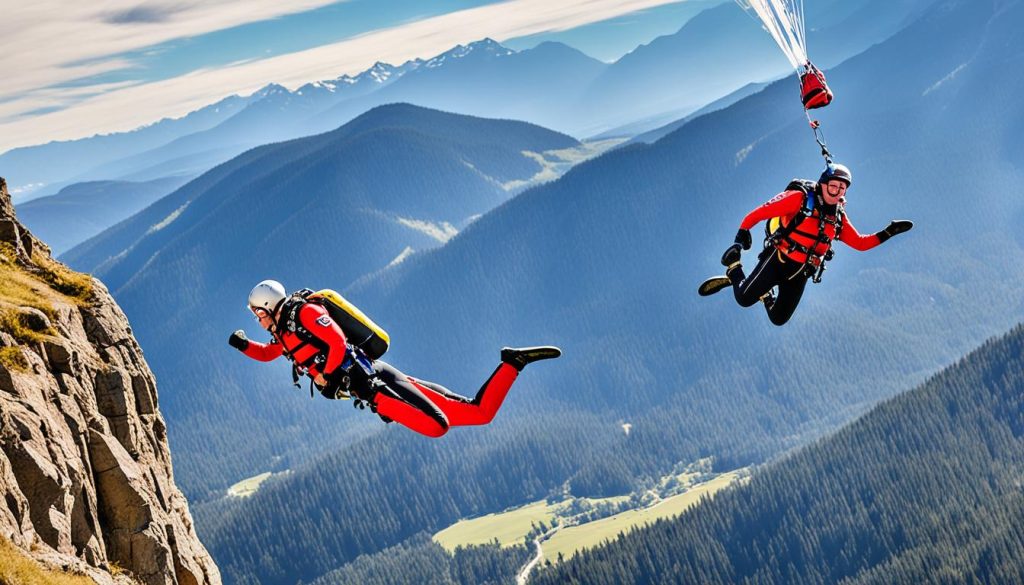
In summary, selecting the appropriate size of parachute is crucial for ensuring the safety of mountain skydiving. By considering factors such as altitude, weight, and experience level, skydivers can choose a parachute size that provides optimal lift, control, and stability throughout the jump. Taking the time to select the right parachute size will result in a safer and more enjoyable mountain skydiving experience.
Tips for Choosing the Appropriate Size of Parachute for High Mountain Jumps
When it comes to high mountain jumps, choosing the right size of parachute is crucial for a safe and successful skydiving experience. To ensure you have the perfect parachute size, it is highly recommended to consult with experienced skydivers or instructors who are familiar with the specific requirements of mountain skydiving. They possess valuable knowledge and can provide expert guidance on selecting the appropriate parachute size based on key factors such as the altitude of the jump, the weight of the jumper, and the desired descent rate.
An experienced skydiver or instructor will take into consideration the unique challenges posed by high altitude jumps and help you determine the perfect parachute size that can provide adequate lift and control. By consulting with professionals in the field, you can significantly minimize the risk of any mishaps during your jump and ensure a safe and successful adventure.
Additionally, it is essential to remember that the choice of parachute size should be suitable for the specific mountain jump you are planning to undertake. Not every parachute will be suitable for every jump, as factors like altitude, weather conditions, and personal preferences can vary. Working closely with experienced individuals will allow you to select a parachute that is tailored to the specific requirements of your high mountain jump.
Overall, keep in mind that determining the right parachute size for high altitude jumps requires expertise and experience. By seeking guidance from seasoned skydivers or instructors, you can make an informed decision and enjoy a thrilling skydiving experience while prioritizing your safety and well-being.
| Tips for Choosing the Appropriate Parachute Size |
|---|
| Consult with experienced skydivers or instructors |
| Consider factors such as altitude, weight, and desired descent rate |
| Ensure the parachute size is suitable for the specific mountain jump |
Conclusion
Choosing the appropriate size parachute for jumping from high mountains is crucial for a safe and enjoyable skydiving experience. Factors such as the weight of the jumper, the altitude of the jump, and the desired descent rate must be considered when determining the size of the parachute. By selecting a parachute that can provide sufficient lift and control, skydivers can ensure a controlled and safe descent.
Consulting with experienced skydivers or instructors who are familiar with the specific requirements of mountain skydiving can be invaluable in determining the appropriate parachute size for high altitude jumps. These knowledgeable individuals can provide guidance based on their expertise, helping skydivers make informed decisions on choosing the right parachute size.
Calculating the parachute size for high altitude jumps requires careful consideration of the unique conditions at higher altitudes. Thin air at high altitudes means less lift, necessitating a larger parachute for adequate compensation. Accurate calculations will ensure that the chosen parachute can provide sufficient lift to navigate the descent safely and smoothly.
To summarize, the size of the parachute is a critical factor in mountain skydiving safety. Through careful consideration of the factors involved and seeking guidance from experienced professionals, skydivers can select the appropriate parachute size for their high altitude jumps, ensuring a thrilling and secure skydiving adventure.




